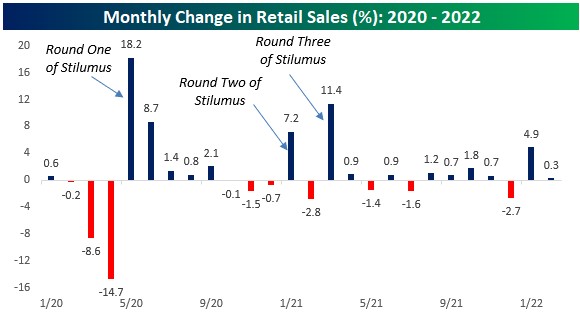What to do About Inflation?
Inflation is on everyone’s mind these days. And how can it not be? Prices on everything seem to be higher (or the same price with smaller packaging – sneaky shrinkflation) and, perhaps worse, there’s growing concern about how high prices could be later this year, next year, and beyond.
It’s concerning as well, of course, when the smartest minds in the room seem to have gotten it wrong. For much of last year economists and forecasters mostly called for a short-term, or “transitory”, bump in prices followed by a quick decline. Instead, we’ve seen a multi-month run leading to average consumer prices at 40-year highs. And that was only through February.
Shuttering much of the economy and then force-feeding consumer spending had never been tried before so, in a way, maybe we ought to cut the forecasters some slack. Also, I wonder if they may have been wrong in their initial time estimate but ultimately right in their view of the path for inflation (a surge higher followed by tapering off). But how long until inflation peaks and what price hikes will prove sticky?
The typical consumer remains in pretty good financial shape, which implies capacity to spend more, but continued supply chain issues, global uncertainty, and now the Fed raising short-term rates, might slow demand given that the free money tap has been turned off.
Uncertainty around all this raises many important questions for our economy and markets, but also some practical questions like:
I eventually want to replace my windows. Should I do it now even though prices have seemed to skyrocket in the past year, or should I wait for prices to get back to normal?
What does “get back to normal” even mean in this context?
I’m retired and need to know how long I can afford higher levels of inflation. What, if anything, should I do about it in the meantime?
These sorts of questions don’t have one right answer. Past inflation, and fear of more to come, can alter our psychology around money and our plans for the future. This, perhaps ironically, can help turn inflation expectations into a self-fulfilling prophecy. I’m not making light of inflation, just that we should be careful about changing too much today based on inflation fears that may not end up being fully realized, or at least not as much as some of the more inflammatory talking heads on TV and the internet suggest.
Some manufacturers are reporting a slowing in new orders but still have heavy backlogs to work through. Pending home sales have started to trend lower, as has consumer confidence. All three areas are still high relative to history, but the winds may have started to shift. Maybe inflation starts to peter out later this year like experts suggest? We’ll see.
While it makes sense that government cash stimulus drives retail sales, the following article segment and chart from my research partners at Bespoke Investment Group shows the relationship clearly. The chart also seems to imply that demand should wane as the effects of massive government spending dissipate. But it was a lot of spending creating a lot of demand, so it’s understandable if it takes a while.
From Bespoke…
When COVID-19 was officially declared a pandemic by the World Health Organization (WHO) on March 11th, 2020, no one knew what to expect. As uncertainty about the future grew, people across the globe scrambled to purchase canned goods, personal protective equipment, and weapons among other things. President Trump called for all Americans abroad to return home and restricted travel and trade from China in an attempt to mitigate the spread of the virus. In the early days of the panic, investors sold off their equity positions aggressively, resulting in a market crash and a peak VIX reading of over 85. Panic filled the streets, and everyone across the globe feared for their health, livelihoods, and net worth.
Regardless of your opinions regarding the effectiveness of various federal and state government COVID policies, there is no question that restrictions on activity (both enforced and voluntary) along with the stimulus provided by the federal government and the Federal Reserve dramatically altered the course of the economy. Whether it's elevated levels of inflation, supply chain constraints, or labor shortages, many of the headwinds our economy faces today can be attributed to the pandemic. In 2019, a Federal Reserve survey found that nearly 40% of Americans wouldn't be able to cover a financial 'emergency' of even $400. Two years after a catastrophic pandemic that sent the unemployment rate surging from 3.5% up to 14.8% in just two months, consumer balance sheets are now healthier than they were pre-pandemic. The various stimulus programs meant to combat the pandemic created massive waves of demand, and it's no coincidence that after each of the three rounds of stimulus checks hit consumer accounts, Retail Sales surged.

The COVID response from the federal government (stimulus, payroll protection, easing tax burdens, etc.) and the Federal Reserve (lowering interest rates to near zero, expanding the balance sheet, etc.) helped to shorten what would have likely been a prolonged recession or depression into a short downturn and a massive boost to financial markets […]
Here's a link to Bespoke’s website.
https://www.bespokepremium.com/interactive/
Have questions? Ask me. I can help.
- Created on .



